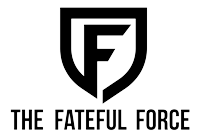The Dwarven Kingdoms have a history of war with their greatest enemies the Frost Giants.
Five hundred years ago, saw the conclusion of the first Dwarf-Giant war where the dwarves toppled the Frost Giant Citadels and ousted them from the north pushing them into the Frozen Lands. This came at a great cost to the dwarves.
By the conclusion of the first Frost War, the dwarves had taken horrendous losses and had already started to consolidate their power closer to the north fortress cities, abandoning their southern holding in what is called the “Lost Kingdom”.
They planned to resettle their lost lands and re-open their mines when their population had recovered after the war but the influx of humans shortly after the exodus made this impossible.
Human colonists on the Free Coast discovered the abandoned mines with their small deposit of the incredibly precious mithral along with decent reserves of gold and silver.
The dwarves did not count on the volume of humans settling the Free Coast as well as lacked the resources to contest this mass migration.
The annexation of traditional dwarven lands, particularly the mithral mine north of Fairhaven, is a sore topic between the Free Cities’ Coalition and the Dwarven Kings of the North.
The colonists fought for every inch of those mines, even defeating some younger dragons, lesser giants, and hordes of Goblins to claim them, refusing to give them back to the dwarves.
The Dwarves, who are known for their legendary grudges, knew they would eventually claim their holdings back by force but during the Second Frost War, known as the Orc Uprising, the humans of the Free Cities and Province Nations lent them great aid in a time of need.
The Stubborn Dwarves conceded to give up their ancestral claims to these lands in light of this great service.
The fact that the mines were almost exhausted, played a large factor in their political decisions, probably more so than the human’s contribution to the war effort.
Dwarves have a special hatred for the youngest race in the world, the orcs.
This is largely due to the fall of the Stone Gut Clan and their fortress city at the hands of the orc during the Second Frost War.
Rogue Orc tribes and Clans frequently raid into the dwarven territories reinforcing their hatred.



